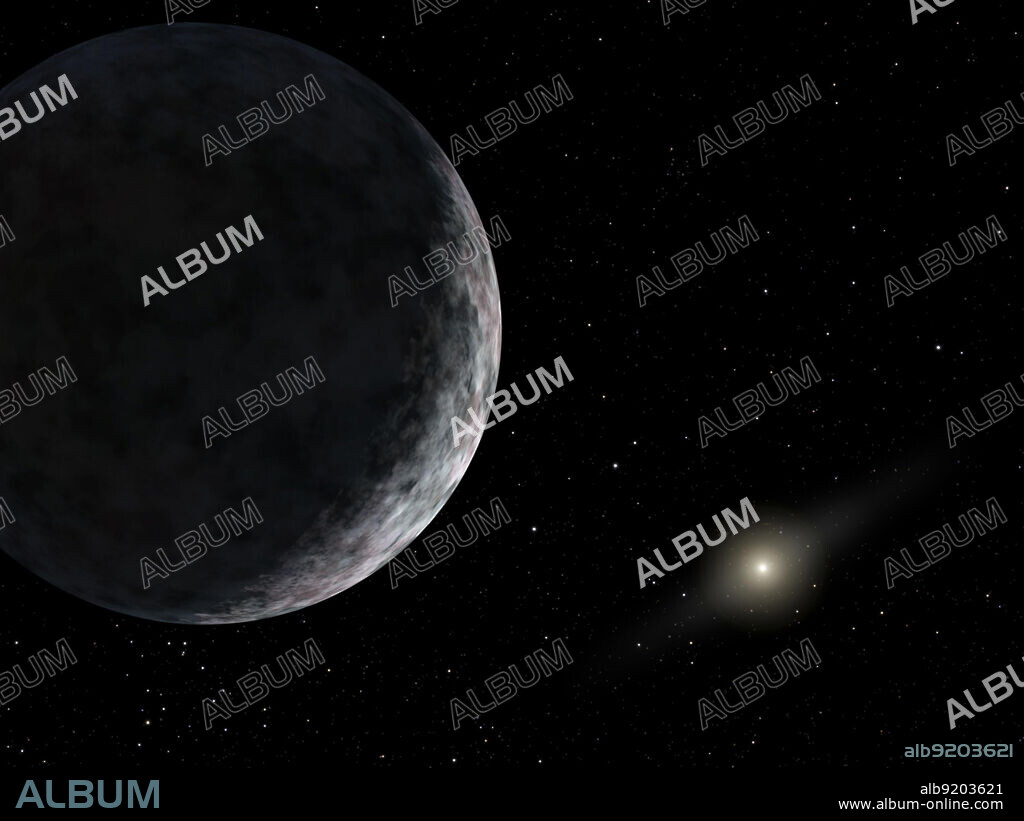alb9203621
Eris and The Sun

|
Zu einem anderen Lightbox hinzufügen |
|
Zu einem anderen Lightbox hinzufügen |



Haben Sie bereits ein Konto? Anmelden
Sie haben kein Konto? Registrieren
Dieses Bild kaufen.
Nutzung auswählen:

Titel:
Eris and The Sun
Untertitel:
Siehe automatische Übersetzung
Named after the Greek goddess of conflict, the icy dwarf planet Eris has rattled the general model of our solar system. (In this artist's conception, the flaring object to the lower right of Eris is The Sun.) The object was discovered in the outer reaches of the Kuiper belt in 2005. Its detection provoked debate about Pluto's classification as a planet. Eris is slightly larger than Pluto. So if Pluto qualified as a full-fledged planet, then Eris certainly should too. Astronomers attending the International Astronomical Union meeting in 2006 worked to settle this dilemma, and in the end, Pluto was demoted and reclassified as a dwarf planet along with Eris and the asteroid Ceres, the most massive member of the asteroid belt.
Bildnachweis:
Album / NASA/JPL-Caltech/Space Science Institute / Science Source
Freigaben (Releases):
Model: Nein - Eigentum: Nein
Rechtefragen?
Rechtefragen?
Bildgröße:
Nicht verfügbar
Druckgröße:
Nicht verfügbar
Schlüsselwörter:
ASTRONOMIE • ERKUNDUNG • ILLUSTRATION • ILLUSTRATIONS • KUENSTLER • KÜNSTLER • OBJEKT • PLANET ALLE • PLANET • UNIVERSUM (WELTALL) • WELTRAUM • WISSENSCH.: ASTRONOMIE • ZWERG
 Pinterest
Pinterest Twitter
Twitter Facebook
Facebook Link kopieren
Link kopieren Email
Email
